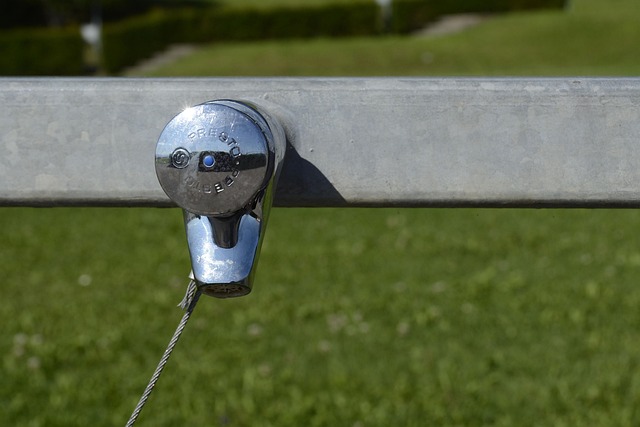Contrast therapy, involving alternating hot and cold temperatures, has gained popularity among athletes as a recovery and performance enhancement tool. This method boosts blood circulation, aiding muscle repair, reducing soreness, and inflammation post-workout. By expediting recovery, contrast therapy allows athletes to maintain rigorous training schedules while minimizing injury risks. Additionally, it enhances athletic endurance through acclimation to temperature fluctuations, benefiting high-intensity sports. Best practices include using suitable techniques like contrast showers or ice baths, proper warming up, and regular scheduling for maximum benefits. Its growing popularity among professional sports teams and elite athletes worldwide underscores its potential as a valuable addition to training routines.
Discover the transformative power of contrast therapy, a game-changing strategy for athletes aiming to enhance performance. This holistic approach leverages temperature extremes—from icy cold to sweltering hot—to stimulate physiological responses beneficial for recovery, muscle growth, and endurance.
Learn how integrating contrast therapy into training routines can provide a competitive edge, boost athletic performance, and accelerate post-workout recovery. Explore practical strategies and real-world examples to unlock your full athletic potential through this innovative method.
Understanding Contrast Therapy: Benefits for Athletes
Contrast therapy, an innovative approach to recovery and performance enhancement, has gained significant traction in the athletic world. This technique leverages the power of temperature extremes to stimulate blood circulation and promote muscle repair. By alternating between hot and cold therapies, athletes can experience numerous benefits tailored to their training routines.
For athletes, contrast therapy offers a natural way to reduce muscle soreness and inflammation post-workout. The sudden shift from heat to cold signals the body to increase blood flow, delivering essential nutrients and oxygen to fatigued muscles. This process accelerates recovery, enabling athletes to maintain consistent training schedules and potentially enhance overall performance. Moreover, it can help improve athletic endurance by conditioning the body’s response to temperature variations, which is particularly beneficial for high-intensity sports.
Incorporating Contrast Therapy into Training Regimes
Incorporating contrast therapy into training regimes can significantly enhance performance and recovery for athletes. This strategy leverages the power of temperature extremes to stimulate various physiological responses, including improved blood circulation, reduced muscle soreness, and enhanced mental focus. By alternating between hot and cold treatments, athletes can accelerate post-workout recovery, allowing them to maintain intensity and frequency in their training schedules without increased risk of injury or overtraining.
Contrast therapy offers a simple yet effective method for athletes to optimize their training. For instance, a typical contrast therapy session might involve immersing oneself in an ice bath after intense exercise, followed by a period of heat exposure. This cycle promotes vasodilation and vasoconstriction, respectively, which helps flush out metabolic waste products while increasing oxygen and nutrient delivery to working muscles. As a result, athletes experience improved performance during subsequent training sessions and reduced delay or discomfort associated with post-workout recovery.
Best Practices and Tips for Effective Implementation
Integrating contrast therapy into training routines can significantly enhance performance and recovery for athletes. Here are some best practices and tips for effective implementation.
First, understand the specific contrast therapy techniques that align with your athletic goals. Contrast showers, ice baths, and compression gear are popular methods. Each has unique benefits; for instance, alternating between hot and cold temperatures improves circulation and reduces muscle soreness. Ensure proper preparation before applying contrast therapy to prevent injury or discomfort. Athletes should warm up adequately before contrast exposure and listen to their bodies, adjusting intensity as needed. Regular scheduling is key; incorporating contrast therapy after intense workouts or competitions can optimize recovery and performance gains over time.
Real-World Examples of Success in Athletic Performance Enhancement
Contrast therapy, involving alternating hot and cold temperatures, has gained significant attention in athletic performance enhancement. Professional sports teams and elite athletes worldwide are embracing this approach to speed up recovery, reduce muscle soreness, and improve overall performance. For instance, many football (soccer) clubs incorporate contrast baths or showers into their post-training routines. Players immerse themselves in freezing water for a short period after intense training sessions, followed by hot water, which has been shown to boost blood circulation and promote faster muscle recovery.
Another compelling example is the use of contrast therapy by marathon runners. These athletes often employ ice baths to decrease inflammation and delay muscle fatigue during their peak training periods. This technique allows them to maintain intensity in practice runs while minimizing the risk of injury, ultimately leading to better race outcomes. These real-world applications highlight the potential benefits of contrast therapy as a valuable addition to athletes’ training routines.
Integrating contrast therapy into training routines offers athletes a powerful tool to enhance performance and accelerate recovery. By understanding the benefits, such as reduced muscle soreness, improved circulation, and faster post-workout recovery, athletes can strategically incorporate this method into their regimes. Best practices include consistent timing, alternating hot and cold sessions, and focusing on specific body areas. Success stories in various sports demonstrate that contrast therapy is a game-changer for athletic performance and overall well-being. For athletes seeking an edge, embracing contrast therapy could be the key to unlocking their full potential.
